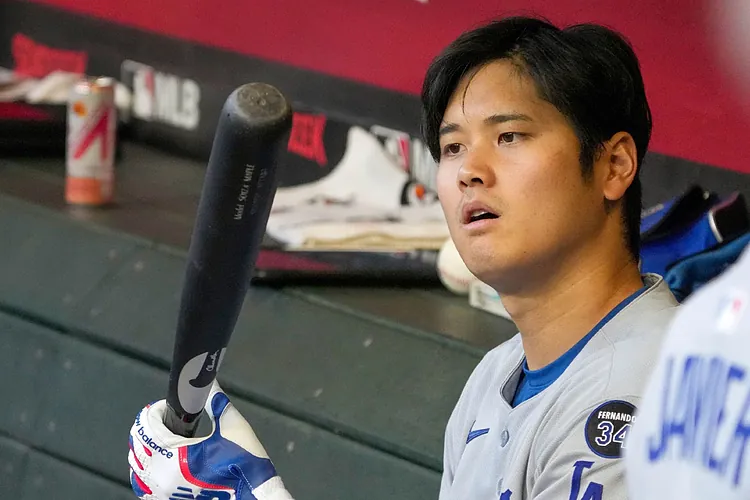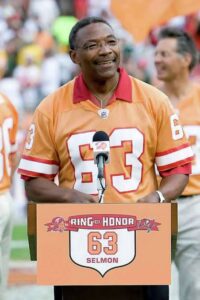
Shohei Ohtani: A Difficult Time in a Complex Era for Baseball
Shohei Ohtani, the two-way sensation who has captivated the sports world with his unprecedented talents as both a pitcher and a hitter, is currently going through a difficult time. As of the 2025 MLB season, Ohtani’s future is shrouded in uncertainty, both on and off the field. For a player who has already rewritten the baseball record books, the debate surrounding his career has reached new heights, leaving both fans and experts to wonder: What lies ahead for the “Babe Ruth of Japan”?
Ohtani’s journey to MLB stardom was nothing short of remarkable. After showcasing his dual-threat abilities in Japan’s Nippon Professional Baseball (NPB), Ohtani made the unprecedented decision to leave his home country and take his talents to Major League Baseball. In 2018, Ohtani signed with the Los Angeles Angels, sparking an era of hope for a sport that had been missing a transcendent two-way player for decades.
His impact was immediate. In his rookie season, Ohtani dazzled with a fastball that touched the high 90s, a devastating splitter, and an ability to hit for both power and average. He became the first player in MLB history to be selected as both a pitcher and a hitter to the All-Star Game. His success in both roles was nothing short of revolutionary, and he quickly became the face of a new era of baseball, one where the line between pitcher and hitter could be blurred.
But even as Ohtani was becoming one of the most iconic figures in the sport, cracks began to appear in the seemingly flawless story. Despite his individual brilliance, the Los Angeles Angels as a team struggled to achieve consistent success. The organization failed to build a competitive roster around him, leaving Ohtani in the uncomfortable position of being one of the best players in the game without playoff contention.
Injuries, which have often plagued Ohtani throughout his career, also became an increasing concern. He underwent Tommy John surgery in 2018, and while he was able to return to both hitting and pitching duties in 2019, his physical durability continued to be a major question mark. Yet, the world of baseball has long accepted that Ohtani’s sheer brilliance makes the risk worth it, and his place in the game remained secure.
Fast forward to 2025, and the Ohtani narrative has taken a dramatic turn. After a stellar 2024 season in which Ohtani was once again an All-Star caliber player, he found himself at the crossroads of an incredibly important moment in his career. He is poised to become a free agent following the 2025 season, and the uncertainty of his future has been compounded by a combination of factors: injuries, contract negotiations, and the changing landscape of MLB itself.
Ohtani’s physical struggles have been more pronounced in recent years. A season-ending elbow injury in 2024 raised questions about his long-term viability as both a pitcher and a hitter. While there has been some optimism about his recovery, the reality is that Ohtani’s body may not be able to sustain the unique demands of being a two-way player much longer. His pitching arm has been a source of concern for several years, and the brutal nature of professional baseball — particularly for pitchers — makes every season a gamble. With each injury, Ohtani’s two-way career feels increasingly precarious.
On the field, Ohtani’s batting has also seen some decline in recent seasons. While still one of the most dangerous hitters in the game, his power numbers have dropped slightly, and his plate discipline has become a subject of scrutiny. His inability to fully break through with the Angels, despite being surrounded by talent like Mike Trout, has sparked renewed debate about his role on a contending team. Can Ohtani continue to excel on both sides of the ball in the future, or will he have to choose between pitching and hitting in order to extend his career?
These physical issues are compounded by the impending free agency that looms over Ohtani’s future. The financial landscape of Major League Baseball has changed dramatically over the last decade. In a market now dominated by super-rich teams like the New York Yankees, Los Angeles Dodgers, and New York Mets, the prospect of a long-term contract for a player with Ohtani’s injury history becomes more complicated. It’s a topic that has been widely discussed, but it’s clear that the question of Ohtani’s value will be far more complex than any simple financial equation.
The issue is not just his ability to perform on the field; it’s also about the risk factor that comes with signing a player who could be a liability in a few seasons. Ohtani is a once-in-a-lifetime player, but with age and injury concerns, teams may not be willing to offer the kind of long-term contract that his talent deserves. As Ohtani enters the prime of his career, many baseball insiders are wondering if he will be forced to alter his approach — maybe sacrificing the dual role that has defined his career in favor of more stability as either a hitter or pitcher.
Perhaps the most significant question surrounding Ohtani’s future is whether or not he can continue as a two-way player. From the moment he entered MLB, Ohtani was heralded as a phenomenon, a player unlike any other in modern baseball history. In many ways, he became a symbol for the potential of a new era, one where players no longer had to be pigeonholed into a single role. Could Ohtani be the face of a new style of baseball, where hitting and pitching are no longer mutually exclusive?
But as we see today, that vision seems increasingly unlikely. Ohtani’s struggles with injuries, particularly his arm, make it hard to ignore the possibility that he may need to pick one role. His pitching mechanics and his ability to maintain both roles on a major league level for an extended period are simply too difficult to sustain.
If Ohtani were to choose one side of the game — to become either a full-time hitter or pitcher — the possibilities are exciting. As a hitter, Ohtani would still be one of the most dynamic and dangerous offensive players in the league, with the potential for 40-home run seasons and MVP-caliber performances. If he focused solely on pitching, Ohtani could evolve into a Cy Young contender, a player who can dominate hitters with a fastball, slider, and splitter that rank among the best in the game.
However, the beauty of Ohtani lies in his ability to do both, and his legacy will likely always be tied to his two-way achievements. If he ultimately chooses one path, it will leave an undeniable void — not just in the world of baseball, but also in the imaginations of fans who marveled at his unique skill set. The debate about Ohtani’s future will likely revolve around this very question: Is it worth sacrificing the magic of his two-way dominance to ensure a longer, more sustainable career?
Regardless of what happens in the near future, Ohtani’s legacy in baseball is already secured. His impact goes far beyond statistics. He has reshaped the perception of what a player can be, transcending traditional expectations and forcing us to reconsider the possibilities for athletes in a team sport. His journey will undoubtedly inspire future generations of players who dream of being as versatile as Ohtani.
Ohtani’s challenges reflect a broader issue within the game of baseball. While the sport has long celebrated specialization, the reality is that modern baseball has become a game of heightened specialization. Teams increasingly value players who can excel in a specific role, and the demands placed on pitchers, in particular, make it difficult for anyone to thrive as a two-way player. In many ways, Ohtani’s current struggles are a microcosm of the sport’s evolution. The ideal of the two-way player, once an accepted part of the game, has become a rarity, as the physical toll on players has become more pronounced.
In a sense, Ohtani’s future also represents the future of baseball itself. Will the game embrace the versatility he represents, or will it continue to favor specialization? Will future players attempt to follow in Ohtani’s footsteps, or will they choose the safer path of focusing on a single skill set?
As Shohei Ohtani navigates through this difficult time in his career, the debate about his future remains wide open. The questions surrounding his physical durability, his ability to continue as a two-way player, and his upcoming free agency make his future one of the most captivating storylines in modern baseball.
Yet, amid the uncertainty, one thing is clear: Ohtani’s impact on the sport will be felt for years to come, regardless of how his career unfolds. Whether he continues as a two-way player or focuses on one role, his legacy as one of the greatest to ever play the game is already cemented.
The debate will continue to rage, but for now, the question remains: What comes next for Shohei Ohtani, the player who has forever changed the way we think about baseball?





